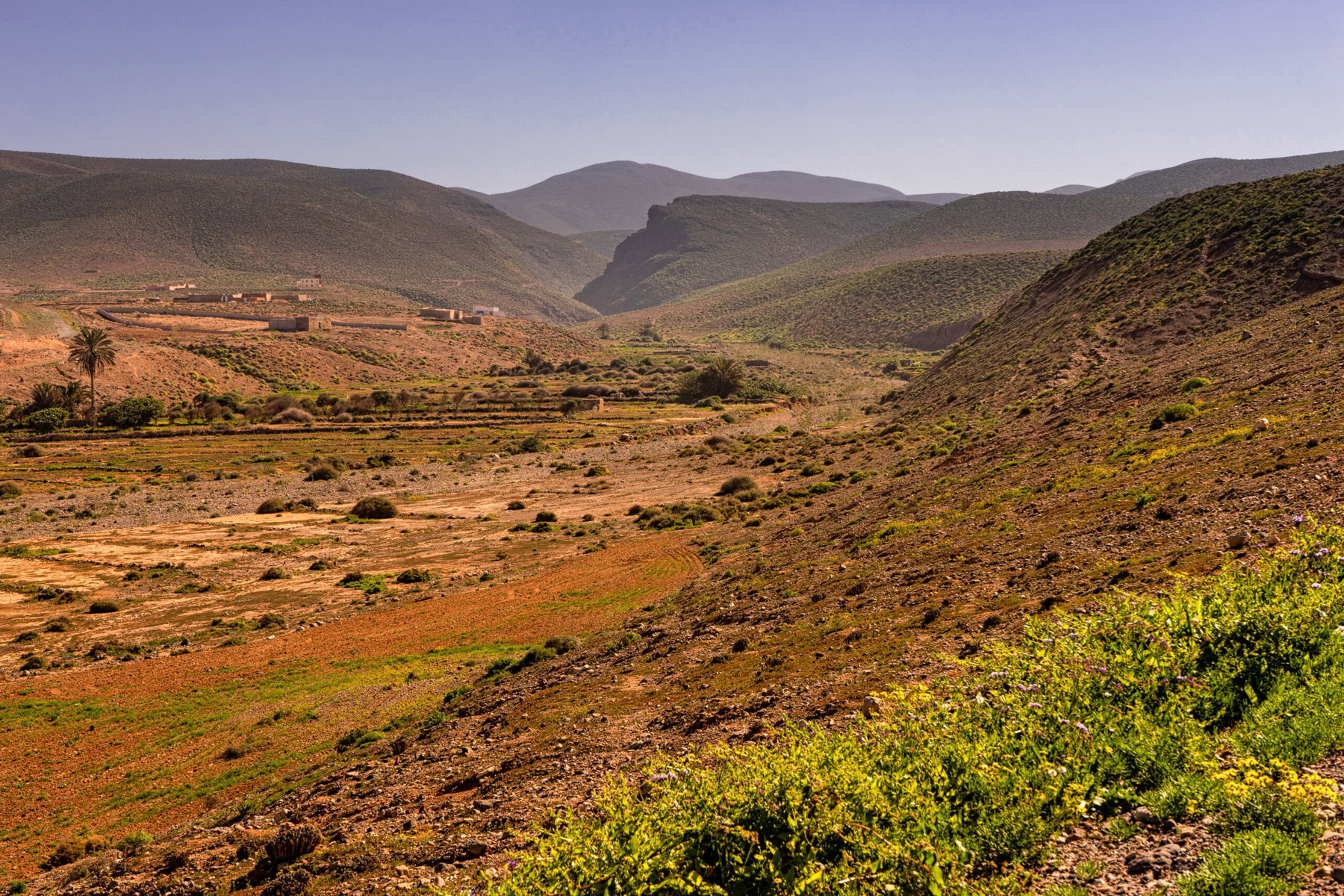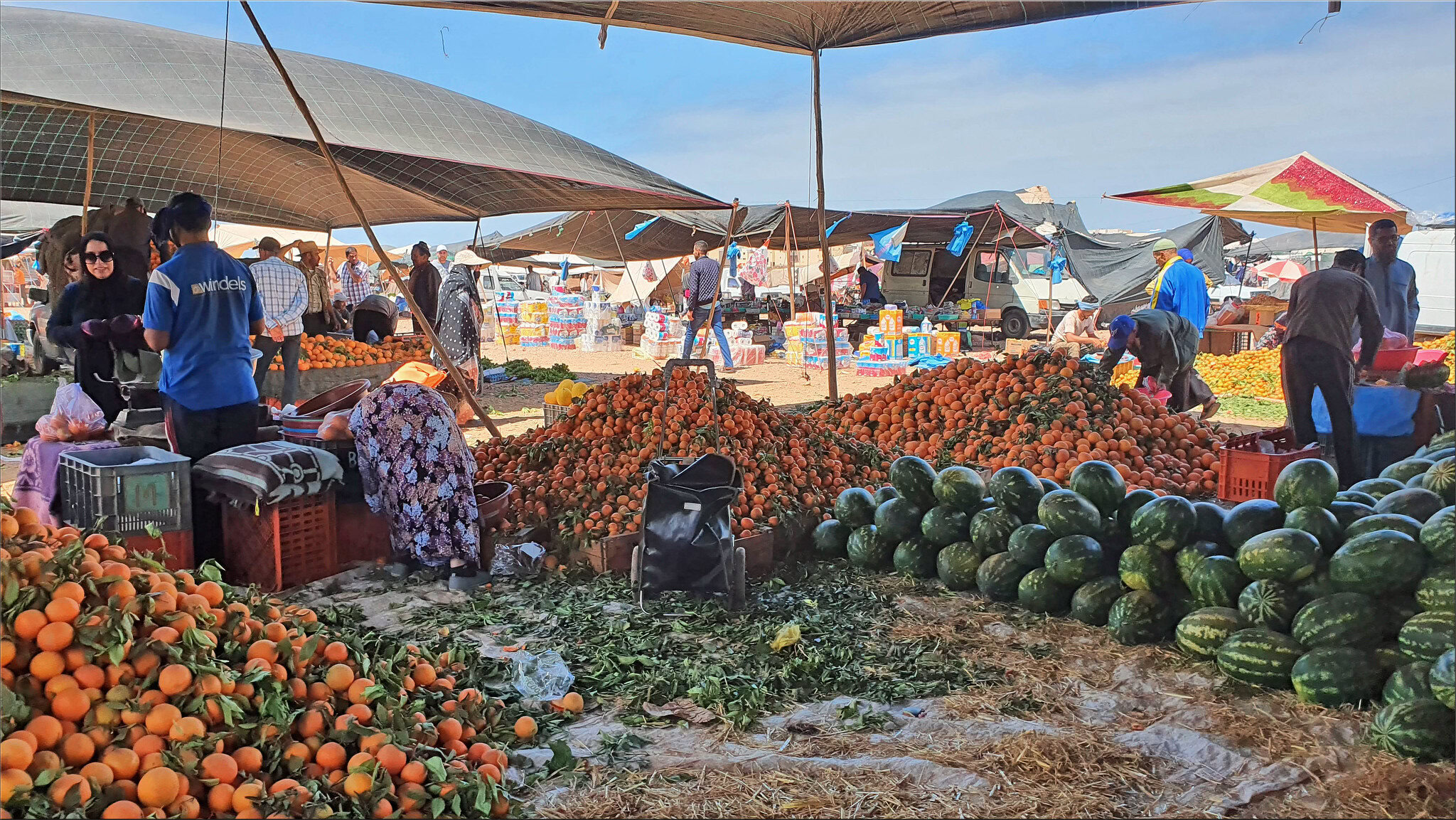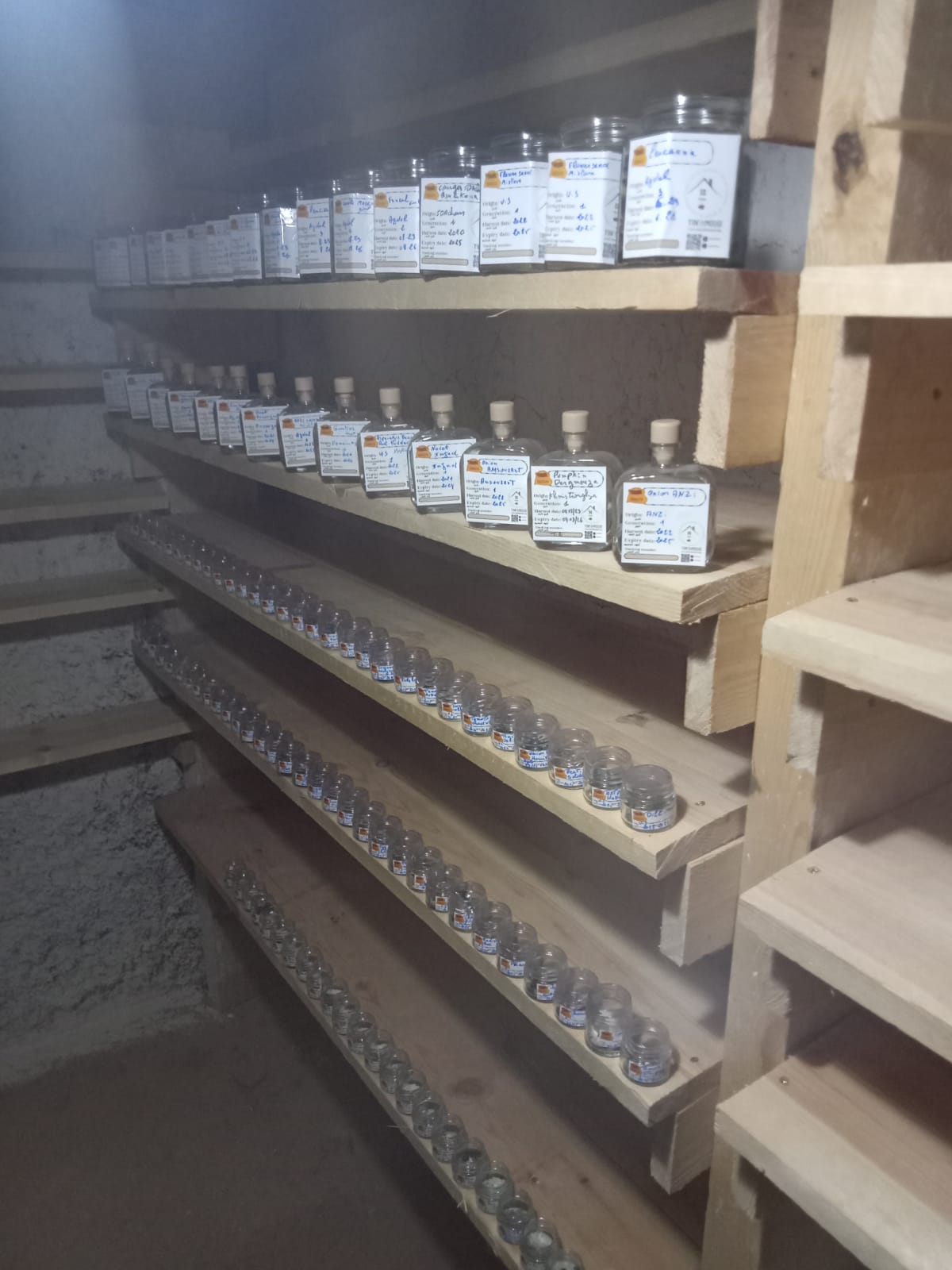Ibrahim Fajea’s family is one of 131 families remaining in a small community of subsistence farmers in Sidi Ifni on the west coast of Morocco, on the shores of the Atlantic Ocean. Nestled in the north African country’s Guelmim province, Fajea’s land has suffered from a debilitating drought for almost six years, which drove many farmers away.
Originally from Tighmert, about 75 kilometers south of Sidi Ifni, the 42-year-old and his family of five have been struggling to keep food on the table.
“When the water dried up in the oasis many families were forced to leave,” Fajea says. “I worked with a few people in our farmers’ collective to dig three wells to use groundwater for irrigation.”
But keeping farming alive in this region requires more than just wells. That’s why Fajea is one of a hundred farmers participating in an ecological seed bank initiative by Dar Si Hmad Foundation to help his farming community. Launched in 2021 in Sidi Ifni, the seed bank sources indigenous seeds from across Morocco and Europe. By focusing on traditional, drought-resistant varieties and carefully storing the seeds, the seed bank — and an accompanying training program for farmers — is helping to revive the land and improve the livelihoods of those who rely on it.
A report published by the European Union’s Joint Research Council (JRC) in February warned that after six years of drought, including over two years of severe drought, Morocco has been designated as an area of “severe concern.”
The drought has taken a toll on Morocco’s vital agricultural sector, which generates 14 percent of the country’s export revenue and employs about a quarter of the population, leading the government to implement emergency measures to address the economic and social repercussions. These include price inflation of agricultural products, low yields of food crops and rural exodus.

From 2018 to 2023, the country grew drier and drier, with average water flows falling by more than half, putting the majority of the country’s 155,000 hectares of farmland in jeopardy.
Furthermore, small subsistence farmers, 88 percent of whom depend entirely on rain to cultivate their crops, face yet another challenge: reliance on expensive, imported, genetically modified seeds that are ecologically mismatched with Morocco’s critically parched reality.
According to a report by the International Energy Agency, the average annual temperature in Morocco increased by 1.7 degrees Celsius between 1971 and 2017, and in the past five years, the increase reached 1.8 degrees, leading to a crisis in both drinking water and water for irrigation, hence the threat of serious food insecurity.
The situation will worsen as the country approaches the absolute scarcity threshold of water, which is 500 cubic meters per person annually, by 2030, according to a World Bank report.
Yet despite government plans and a series of initiatives launched to raise awareness about water conservation, aquatic engineer Faisal Aziz believes it’s not enough.
“We need tight regulation to curb the depletion of natural resources,” Aziz says. “This means implementing strategic governance of human activity, specifically in agriculture.”
Aziz is addressing Morocco’s export-oriented government policy, which he says has exacerbated the country’s levels of water stress through the cultivation of lucrative export produce that consumes tremendous amounts of water.
“One kilogram of watermelon requires 45 liters of water using drip irrigation technology, which means that a 10-kilogram watermelon could consume 450 liters of fresh water,” Aziz explains. “The same applies to avocado, where one kilogram requires over 700 liters of water.”

Aziz says that both public and private sectors should invest in acquiring non-traditional water resources like wastewater treatment or desalination plants, in addition to supporting scientific research on sustainable solutions.
Fajea plows the land the way his ancestors did generations ago. “I use organic fertilizer produced from livestock and poultry,” he explains, as he extolls the benefits of agroecology, ecological agriculture that uses no chemicals and respects the rhythm of the seasons and natural biodiversity. Such practices are growing more popular in Morocco, albeit slowly: The most recent survey data shows that agroecology went up from 4,000 hectares in 2010 to 10,000 in 2020, accounting for just over six percent of Morocco’s total agricultural land.
“But it all begins with the seeds,” Fajea says. The seeds collected for the seed bank are meticulously stored in a specially designed space. Crafted from sun-dried clay, the space draws on historical Moroccan architectural methods.
Rooted in tradition, the special climate conditions multiply the seed yield at a higher rate, preserving native seeds adapted to the local environment. Traditional varieties of corn, wheat and alfalfa, for example, are drought-resistant, and require fewer resources, enabling farmers to produce more with less.
This seed library, which the foundation calls Tin’Amoud, Amazigh for “mother of seeds,” is the first of its kind in the region. It is a space for safeguarding local heirlooms and perpetuating the tradition of bartering and sharing seeds that are unique and adaptable to the dry and semi-dry local conditions, explains Ouafegah.
“The foundation retains half the quantity of the first and second generation of seeds for storage in the clay houses,” he said. “The other half is given to the farmers to cultivate. The third generation of seeds can be stored for two to three years.”
Crushed by negative news?
Sign up for the Reasons to be Cheerful newsletter.
These seeds are kept in jars with information cards, a traditional method that requires complete shade and temperatures that do not exceed 26 degrees Celsius. The only danger is insect infestation, which could result in poisoning the seeds, explains Ouafegah.

Though it will require several more seasons to fully measure how the seed bank initiative has improved yields, already, farmers have benefited significantly. Their produce is now fully organic, making it more marketable. And as the seed bank allows them to preserve more seeds with mother genes over the years ahead, they will grow increasingly self-sufficient, no longer relying on imported seeds, which require more water and the use of pesticides.
“Preserving the mother genes of these seeds is the best way to avoid a food crisis in the future,” Ouafegah says, lamenting the fact that 95 percent of seeds used in agriculture in Morocco are currently imported.
As part of the initiative, Fajea and the other participants completed a farmer agroecological training program called Afous Ghissiki, an Amazigh phrase meaning “the hand in the abandoned land.” Afterward, Fajea says, the trainer from the foundation taught them how to market their organic products.
“We were introduced to foreign families and tourists who are more interested in buying our natural, organic products than the locals,” he says.
The initiative creates sustainable livelihoods for both the farmers and their environment, Dar Si Hmad trainer Mustapha Ouafegah explains: “We teach farmers how to revive the land, using natural agricultural pesticides suitable for dry conditions and poor irrigation.”
When it comes to efforts like the seed bank, sustainability is only one advantage, says Jihad Malih, an expert in eco-farming. “These seeds have a greater ability to pass on their genes to subsequent generations of seeds and to adapt to any weather conditions, whether it’s drought, poor irrigation or even excessive heat,” Malih says. “They also have significantly more nutritional value compared to genetically modified seeds and are healthier for consumers.”
Malih refers to the famous study conducted by Donald Davis, professor at the Biochemical Institute at the University of Texas in Austin, who compared data gathered by the US Department of Agriculture in 1950 and 1999 on the nutrient content of 43 fruit and vegetable crops. Davis found that six of 13 nutrients studied (phosphorus, iron, calcium, protein, riboflavin and ascorbic acid) had declined by between nine and 38 percent.
“Genetically modified seeds also limit a farmer’s independence, who must buy new seeds every season,” says Malih. “Imported seeds also require more water and chemical pesticides.”
Jamila Bargach, anthropologist and executive director of Dar Si Hmad foundation who holds a PhD from Rice University, has even bigger dreams for the farmers of Sidi Ifni. “Our aim,” she says, “is to produce seeds from local varieties and distribute them freely through a system of bartering and free sharing among farmers. This is how we create a new dynamic in the consumption and production chain and eventually achieve grain sufficiency and food independence.”
This article was produced in collaboration with Egab.
The post Moroccan Farmers Are Banking Traditional Seeds for a Hotter, Drier Future appeared first on Reasons to be Cheerful.


